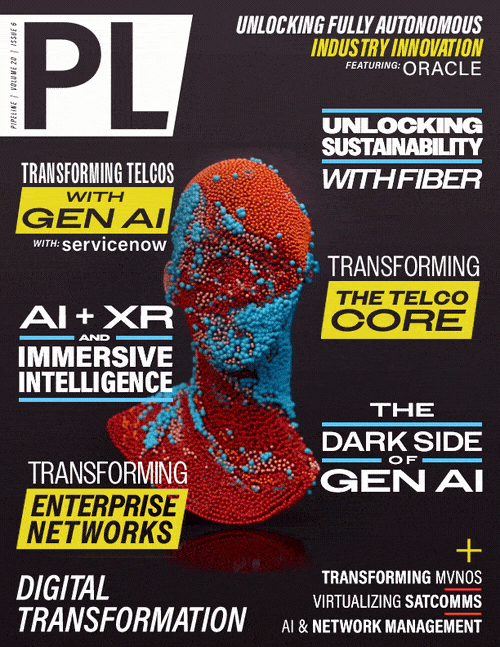Green Speed: Unlocking a Sustainable
Future with Fiber Broadband
By: Filip De Greve

The digital revolution isn't just transforming how we connect. It's reshaping our lives and redefining our relationship with the planet. While the telecommunications industry fuels this revolution, it also faces a critical challenge: sustainability.
Telecom networks, data centers, and the ever-present hum of digital activity require power that generates greenhouse gas emissions, contributing to climate change. In total, the ICT industry is estimated to be responsible for 2 percent of the world’s carbon footprint—roughly on a par with the aviation industry.
But there's a considerable flip side: the emissions avoided through the use of ICT are already nearly ten times greater than those generated by deploying it, from video conferencing replacing transatlantic flights, to smart thermostat optimizing home energy use, or the online shopping boom reducing car journeys.
Multiply that impact across industries, homes, and individuals, and the digital world's potential for environmental good becomes evident. According to the Global e-Sustainability Initiative (GeSI), ICT has the potential to slash global greenhouse gas (GHG) emissions 20 percent by 2030 by helping companies and consumers save energy
Fiber: Green Champion of Broadband
The technology driving the communication advancements at the heart of the ICT industry is fiber broadband, and it holds the key to unlocking a greener future. Fiber is the greenest broadband technology available; faster, more performant, and more energy efficient than anything we’ve seen before.
In fact, a study by Omdia recently found that 50 percent of communication service providers who have deployed fiber PONs said it plays a significant role in helping their organizations meet energy-saving and sustainability goals.
How does fiber consume less energy? The answer basically comes down to fiber being a better and more efficient technology. Let’s compare fiber to copper broadband.
Fiber is what is known as a passive technology. Light traveling down a fiber can go very fast for very long distances without needing to be boosted or amplified. Copper, on the other hand,
provides more resistance: you need more energy to push data through and then amplify it at regular intervals.
Fiber also consumes much less energy than fixed wireless access (FWA). That’s because fiber confines the pulses of light inside the core of the fiber optic cable, whereas in FWA the data travels in all directions and requires more energy. A study launched in 2017 by Europacable found that for a broadband network delivering 50 Mbps services, fiber consumes 3,156 MWh per year, which is more than three times lower than FWA.
The energy consumption of other fixed access technologies is significantly higher: 4,987 MWh per year for copper (xDSL), and 3,465 MWh per year for cable (DOCSIS). In terms of carbon emissions, that’s the equivalent of 1.7 tons for fiber compared to 2.7 tons for DOCSIS.
Cutting Carbon Emissions and More
Fiber has enabled us to decouple increases in bandwidth from increases in energy consumption. In fact, broadband carbon emissions have actually decreased since operators began upgrading older copper networks to deep fiber or full fiber-to-the-home networks. Each new generation of fiber broadband, from GPON, to XGS-PON, and now 25G PON, delivers even more efficiency. Overall, since 2007, broadband power consumption has been reduced by 35 percent while speeds have increased by a factor of 64 (See Figure 1, next page).
As more homes and businesses are connected around the world, the energy consumed per bit delivered continues to fall. Even mobile networks benefit from fiber FTTH broadband, because FTTH fiber
enables the most power efficient backhauling of mobile traffic from cell sites to the network core: 40 percent less power than any other backhauling technology.
Fiber's Ripple Effect: Transforming Industries and Lives
The benefits of fiber broadband extend far beyond its own green footprint. Transport accounts for 21 percent of global emissions, with 73 percent coming from short journeys. With Zoom meetings replacing business trips, online shopping replacing car journeys, and working from home eliminating countless commutes, fuel and carbon



















